#false foxglove
Explore tagged Tumblr posts
Text
Native Wildflowers collection
Native wildflowers from my previous job. All pics by me. Not an exhaustive list. Split into multiple posts due to the image limit.
Starting off with everyone's (read: monarch butterflies') favorite: milkweed. Common milkweed is on the left. I think what we called common milkweed was actually 2 closely-related species. On the right is swam milkweed, which likes wetter soil. Butterfly weed in the bottom is a milkweed, but its sap is clear instead of white so some people don't realize that. It's also much shorter than most milkweeds.



We have 2 main gentian species. These flowers don't open all the way and only larger insects like bees can force their way in. These bees then seek out gentians as an exclusive food source, making it more likely for them to pollinate the gentians. Cream gentian (left) is white and can get very tall on good years. Bottle gentian (right) is a small, low-lying plant that hides under other plants. This picture was taken early in the season so they're pretty pale. They turn bright blue when they're in bloom.


Yellow (left) and purple (right) coneflower


Mountain mint (right) and downy wood mint (left)


Wild raspberry (left) and dewberry (right). My personal nemeses when I was moving through the prairie. Thorns are not my friend


Foxglove beardtongue, which comes in a common white color (right) and a rarer purple variant (left). Below is false foxglove, which is a hemiparasite (plant that gains nutrition through parasitism and photosynthesis) that leaches off of oak roots



Bee balm, this one has a lot of ornamental cultivars

Rattlesnake master, a badass name for a weird and spiky plant

Ironweed. We have a few species and I don't know how to tell them apart

Wild quinine. In the 3 growth seasons I worked here, this one became much more common.

Prairie coreopsis (left) and tall coreopsis (right). Guess what the difference between these two is


Rosinweed (left) and cup plant (right). Two closely related species.


Maryland senna (left) and partridge pea (right). Similar (but not closely related) species that grow pods full of seeds. As they dry, the pods peel open and send the seeds flying out.


Prairie dock. These grow very tall and have huge leaves that are cool because the roots bring up water from deep underground

Ashy sunflower, a hemiparasite that kills goldenrod and tall grasses. As those two are very aggressive plants that can take over whole fields. ashy sunflower seeds are a great way to fight back against them and help increase biodiversity.

Cardinal flower. This one is endangered so its great that it's doing well and even spreading where I worked.

Common thistle. This one is unfortunately losing ground to invasive Canada thistle (not actually from Canada) and isn't very popular, but bugs love it.

Black-eyed Susan (left) and sweet black-eyed Susan (right). The latter is larger and doesn't tolerate shade as well.


Continued in part 2
#plants#native plants#wildflowers#native wildflowers#milkweed#gentian#coneflower#mountain mint#downy wood mint#dewberry#wild raspberries#penstemon#beardtongue#false foxglove#bee balm#coreopsis#rosinweed#cup plant#maryland senna#partridge pea#prairie dock#wild sunflowers#cardinal flower#thistle#black eyed susan
24 notes
·
View notes
Text
rbs > likes
handful of beast ocs for my original story / sort of cookie run au twin moths. i co own this w @floppa-whoppa and @ratiosilence :D
[i still really dont like the canon beasts but im having fu nwith these guys]



#my art#cookie run#cookie run kingdom#cookie run fanart#crk#crk fanart#cookie run oc#story tag: twin moths#should i make oc tags for these guys ? idk#doesnt hurt i suppose#oc tag: false apricot cookie#oc tag: wicked foxglove cookie#oc tag: veiled anemone cookie#if you guys saw these idiots on toyhouse Earlier. no you didnt <3
59 notes
·
View notes
Text

Rough Purple False Foxglove
The preferred locals for this dwindling plant are slowly being eliminated, resulting in a retreat to remote locations like the steep hillside prairies in the Loess Hills of Iowa.
48 notes
·
View notes
Text
Fox (Edgar Lawrence)
My latest design of Fox (aka Edgar Lawrence) from the Foxglove Mythos:

2 notes
·
View notes
Text
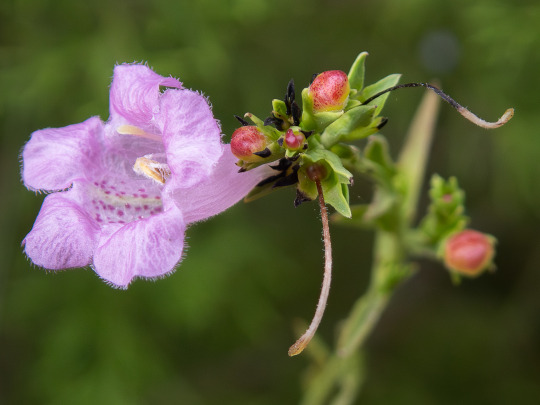
Scientific Name: Agalinis heterophylla Common Name(s): Prairie false foxglove Family: Orobanchaceae (broomrape); prev. Scrophulariaceae (figwort) Life Cycle: Annual Leaf Retention: N/A Habit: Forb USDA L48 Native Status: Native Location: Collin County, Texas Season(s): Fall
Flower, flower buds, and developing fruits.
#Agalinis heterophylla#prairie false foxglove#Orobanchaceae#annual#forb#native#Collin County#Texas#fall#autumn#flower#pink#purple#Scrophulariaceae#plantblr
5 notes
·
View notes
Text




Dandelions are a given but my favorites are purple false foxglove, blue mistflower, blue toadflax, and foxglove beardtongue
love me some Shapes
What's everyone's favourite flowers that aren't like. The normal ones. Like everyone's a fan of roses and sunflowers what's a more niche one. One you don't get in gift sets. Mine's sweet peas
#False foxgloves#blue mistflower#blue toadflax#foxglove beardtongue#the toadflax comes in early spring#the foxglove beardtongue in summer#the false foxglove should be blooming ANY DAY NOW I CANT WAIT#Blue mistflower will just blanket moist roadsides sometimes it’s BREATHTAKING
59K notes
·
View notes
Text
Purple False Foxglove is a Beautiful Fall Wildflower
Purple False Foxglove is a Beautiful Fall Wildflower introduces readers to this gorgeous fall wildflower. It goes on to explain where the author/artist found this plant and explains an interesting quirk that it has.
Purple False Foxglove My most recent trip into the Gothe State Forest was a really amazing one. I found a new swampy area that isn’t even all that far from the house if I go the short way (I took the long way to get there last time). While I was out there I ran into a beautiful red shouldered hawk, discovered a large patch of tamarisk flowers that were filled with pollinators, and found several…

View On WordPress
#beautiful wildflowers#colorful false foxgloves#colorful wildflowers#fall wildflowers#false foxglove photographs#false foxgloves#Florida wildflowers#gerardias#nature photographs#nature photography#photography#purple false foxglove#purple gerardia#purple wildflowers#Seninole false foxglove#wildflower photographs#wildflower photography#wildflowers
0 notes
Text
Since I was asked about it and I really love yapping about symbolism, here’s the breakdown of what flowers are in each bouquet and what they mean
(Disclaimer I’m not an expert on flowers and am going off of google and a Victorian flower language book, alright, disclaimer over, let’s go!)







Full explaination of the symbolism under the cut!
Desert Lily- overcoming challenges
Rue- regret (Grian immediately regretted killing Scar at the final duel)
Marigold- grief (same as above)
Desert rose- resiliency
Desert rose- resiliency
Cactus- they never left that ring
Amaryllis- pride, strength
Poppy and Lilacs- desert duo was such a big part of this series and I’m a sucker for a good overarching symbol
Scott:
Heather- protection/ luck (I was thinking with him and his axolotl, he protected the axolotl and it ended up being a bit of a good luck charm)
Violet- modesty (he started with only two hearts, a modest amount)
Magnolia- dignity
Jasmine- Amiability, Cheerfulness
Clematis- Ingenuity, Cleverness (he prepared well and thought out his endgame strategy, very clever)
Rosemary- remembrance, wisdom
Orchid- elegance (partially because I really wanted some pink in there for his axolotl but also it was a well played game)
Pearl:
Wattle- flower of Australia
Dogwood blossoms- for Tilly 💜 (it also means ‘our love will overcome adversity’)
Begonia- to repay a favor/ a warning
Nettle- revenge
Alyssum- literally translates to ‘without madness’ and also has ties to witchcraft and apparently was used to treat rabies
Anemone- forsaken love
Wormwood- bitterness/ grief
Primrose- luck, joy
Daffodils- unrequited love
Martyn:
(I was a little mean with his, I’m sorry Martyn)
Cherry blossom- symbol of time passing, and how short time is
Gladiolus- you pierce my heart (he killed the last two contestants with a sword, I think he’s the only winner to kill the opponent with a sword) (Grian-fists, Scott- arrows/zombie, Scar- fall damage, Cleo-zombie (ha) Joel- fall damage)
Bilbery- treachery (he backstabbed his former teammate)
Tansy- hostility
Laurel- victory
Orange Lily- good luck
Coral- homage to the mean gills
Fir- an evergreen tree, another symbol of time and a nod to him now having all the time in the world now he’s won
Petunia- resentment (it’s harsh but he kinda resented the idea of a fair fight between the three of them)
Scar:
Sunflower- false riches (it’s scars chosen flower and it fits so well for the trader that never had any good trades)
Foxglove- riddles, secrets (its called Secret Life, I thought it would be perfect)
Datura- deceitful charms (scar was incredibly shrewd, clever and charming, this is an excellent flower for him)
Crocus- cheerfulness
Dandelion- magic, transformation
Poppy and lilac- hey, I haven’t left the desert either
Fern- magic, secrecy
Cleo:
I didn’t have much for them because it was only one episode but I’ve got a few
Larkspur- levity (it was a fun session and they seemed to have fun with it
Sweet pea- ‘thank you for a lovely time’ (they had a lovely fun time!)
Chamomile- energy in adversity (they were having a tough time with the vr aspect and still kept up energy)
Cattail- peace and prosperity (they kept fairly peaceful with everyone until the end)
Joel:
Honeysuckle- devotion (he was incredibly loyal to his family
Yellow Azalea- friendship, family
Ivy- fidelity, attachment (once again, incredibly loyal and stayed true to his family)
Yarrow- love, strength, courage
Cornflower- hope in love
Zinnia- everlasting friendship (family is advanced friendship)
Blue hyacinth- sincerity (he kept true to his word)
336 notes
·
View notes
Text

HAPPY BIRTHDAY TO THIS MENACE TO SOCIETYYYYY. TILLY I LOVE YOU
he’s 25 but here’s a foxglove fic about his 23rd birthday where I drop some random lore lmao
tag list (lemme know if you wanna be added!!): @kirexa @gimmeurmoneyagh @lallopsyou
fic under the cut! :D
“When’s your birthday, anyway?” Fellow asks. He’s not particularly interested, but he’s known Tilly for long enough that it likely should have come up by this point.
The two of them are sitting on the floor of Fellow and Gidel’s small apartment (honestly better suiting the term single room than apartment, the damn landlord a full on scammer if Fellow does say so himself). They’ve each got a coat in their hands, sewing supplies spread across the floor as they carefully repair holes in the fabric. It had finally gotten cold enough that they could no longer simply layer clothing, and thus the yearly time to sew up clothes is upon them. Tilly, since he’s there often enough, is obviously required to help—while Gidel gets to happily draw in the corner.
Said man hums to himself, swaying back and forth a bit while he sews, tongue stuck out in concentration. “Dunno.” Tilly finally says.
“How do you not know?” Fellow scoffs.
“Well, I don’t have parents or anything like that! So how would I know?” Tilly glances up from his work, shaking his head at Fellow as if he’s disappointed. “Silly.” He scolds.
The beastman glares at him, “You told me you were 22!” He argues, affronted.
Tilly grins at him, “Hmm, yeah. It just felt right. Maybe I’m older than you, though?” His grin turns a little devious, and he tilts his head. “You’d show me more respect if I was older, right~?”
Fellow tosses one of the coats at him, hitting him in the face with it.
In typical Tilly fashion, he instantly collapses backwards, whining about being injured. Gidel, the traitor, giggles at him, while Fellow only snatches up the coat the other was repairing.
He observes the stitching, and scoffs immediately. “This is terrible.” He says, already removing the clumsy attempts.
Tilly finally pauses his dramatic whining, pulling the coat off his face but remaining laid on the ground—although he rolls sideways to better look at the man. “I’ve never sewn anything before, I was simply guessing.”
Fellow rolls his eyes, “You’re really useless on your own, you know that? How have ya’ even survived this long?”
“I’m very lucky.” Tilly says seriously.
“No, you’re not.” He shoots back. “Get up, I’m going to teach you how to do this. You’ve got to know some life skills! Ya’ can’t just live in your little fantasy world where everything goes right for you forever, you know.”
The purple haired man sits up, toxic green eyes staring widely at him. “But my fantasy world is so nice!” He coos, leaning closer to observe what Fellow is doing. Then, in a considering voice, he adds: “Although if it was a real dream world, you’d probably be wearing a maid dre—“
Fellow smacks him in the face with the coat again.
While Tilly whines from where he’s laid out on the floor once more, the beastman stares down at him with absolutely zero sympathy. “There’s no way you’re older than me when you act like that.” He states, voice dripping with condescension and annoyance.
“You’re so rude to me.”
“You deserve it, you absolute buffoon.”
Tilly sits up again, shaking his head. “How people act has nothing to do with their age, ya’ know! I could very easily be 4 years older than you and you’d never know.” He taps his chin in contemplation, a smirk crossing his face. “In fact, I think that’s what I’ll go with from now on! Please show me the respect a senior deserves.” He puts his hands on his hips, a proud look on his face as if Fellow would respond in any other way than bafflement.
“You can’t just change your age!”
“Why not? It’s not like I know when I was born in the first place.”
Fellow sputters, “Wh— No! No, I am NOT having you claim to be OLDER than me!”
“Aww,” Tilly puts a hand over his heart, his eyes widening in false sympathy. “The lovely younger man under my care seems to be struggling, how shall I help him?”
This time, Fellow forgoes the coat in favor of simply tackling Tilly to the floor. Gidel, of course, ignores them rolling around and wrestling, far too used to this behavior from the two of them.
Finally, he manages to pin Tilly down, and he contemplates using the coats to just suffocate him and end his misery already. The other man, meanwhile, just pouts at him. “This isn’t fair at all, you’re much taller than me.” He says.
“And older.” Fellow declares firmly, glaring at him. “Say it, I’m the older one.”
“Only children fight over who’s the oldest.” Tilly says, like he wasn’t just participating in exactly that.
Fellow just squeezes his pinned wrists in response, and finally the man sighs, giving in. “Alright, I’m 22.”
The beastman grins victoriously. “Good.” He says, finally moving to get off him. He suddenly stops, however, as a thought occurs to him. “Huh, wait. How do ya’ decide when you age if you don’t know your birthday?”
Tilly laughs. “Well, whenever it feels right, of course!”
“That’s a terrible way to do things.” He shoots back immediately.
“You wound me deeply, ya’ know?” The human sighs. “And from such an Honest Fellow, too! Surely you must be correct, of course.”
Once again, Fellow is reminded that he HATES Tilly saying his name. There’s just something so infuriating about it.
“Just pick a date for your birthday, and be done with it.” He growls instead, choosing not to acknowledge the goading. Nothing good ever comes from acknowledging Tilly’s taunts, he’d learned long ago.
“Hmm, maybe.” He says, but Fellow can tell from his uninterested tone that Tilly likely won’t follow his suggestion at all. It’s typical of him to ignore perfectly reasonable advice, no matter how annoying and illogical this course of action may be.
A fantasy world he lives in, truly.
Tilly’s words a few minutes ago pop into his head again, and Fellow hurriedly gets back to his sewing. Why he insists on taunting him like that specifically, he doesn’t get. Not that he gets much about the guy in the first place.
Tilly sighs, also going back to the sewing. However, he simply stares at his work for a bit, and then glances back over to Fellow. “You’re right, I’m bad at this.” He admits dejectedly, but then nigh instantly perks up. “I’ll just get you a new coat, problem solved!”
Fellow points his needle at him. “Life skills, remember? Try living in the real world, ya’ sound like some pampered rich kid.”
The man gasps, “Take that back.”
“Get to sewing, then.” He smirks at him, pointing to the stitching. “C’mon, it’s not that difficult. Even Gidel can do this.”
“Well, Gidel is much better than me at a lot of things.” Tilly states, looking over to the corner where said boy has been ignoring them. “Aren’t you?”
Gidel nods.
“At least we agree on one thing, then. Gidel is much better than you in every way.”
“Aww, you say that like you love him more than me…”
Fellow gives him a disgusted look. “I don’t love you at all, in fact.”
Tilly doesn’t seem particularly troubled by his words, not that he expected him to be.
Still, his eyes feel a bit piercing as they observe Fellow. The toxic green color had always made his gaze just a little too intense, after all. It’s almost like he’s calling him out for something, although Fellow has no idea what it could possibly be. It’s not like he was lying.
Tilly finally looks away, wandering instead over to Gidel to see what he’s drawing. Fellow debates scolding him, since he was JUST telling him to learn how to sew, but he lets it happen. They’ve got plenty of time, and he’ll just make the man be the one to go without a coat for a while as punishment.
(Whether or not this ends with Tilly roping him into sharing his own is inconsequential. He’ll make sure not to give in this time, no matter how annoying he gets or how much he begs.)
The bigger question, however, is Tilly’s birthday. Just randomly deciding when to start saying you’re a year older does sound like something the strange man would do, but just as Fellow had said, that was a truly awful system. He would never go about things like that, which is why he’s the rational one who is doing much better for himself, obviously.
So, if Tilly wouldn’t decide on a date, Fellow would. A very simple solution! He’d even get him a gift so he couldn’t protest. A full proof plan, surely—and then Tilly would be required to get Fellow something for his own birthday in compensation. A win-win, as one would say. Quite smart.
(He ignores the little voice in his head that asks why he’d even care about this in the first place. No need to think about it too hard.)
-
“There you are.”
Tilly glances over his shoulder as Fellow approaches, perched on a crate in a random alleyway. He’s got a deck of cards in his hands, and what he could possibly be doing Fellow doesn’t know. He doesn’t move from his position, simply shuffling the cards, and flashes the beastman a grin. “Pick a card!” He says, holding a splayed hand out to him.
Fellow frowns at him. “Not right now, I’ve got something for you.”
Tilly frowns right back at him, raising an eyebrow. He then reaches out a hand, his fingers sliding into Fellow’s hair. Right before the man can swat him away, he’s already pulled back, a new card in his hand. He twirls it around, and then adds it to his deck. “You’re so boring.” He says.
The beastman stares at him, wide eyed. “Don’t do that.” He tells him.
Tilly tilts his head, a sly grin on his face. “Do what?”
“You—ugh, you’re distracting me.”
“I’m distracting?” The man bats his eyelashes, and Fellow rolls his eyes.
“Here.” He says instead of acknowledging his words, and pushes a box into Tilly’s chest.
He raises an eyebrow, a confused look on his face. “What’s this? Are you proposing? Well, I suppose I can accep—
“It’s a birthday gift, you fool.” Fellow cuts him off, crossing his arms.
“….It’s my birthday?” Tilly asks.
He nods back at him, confirming. “Today’s your birthday.”
“Oh!” Tilly’s eyes light up, and he stares down at the box. “I’ve never had a proper birthday! Is it normal to propose on them?”
“It’s OBVIOUSLY not a proposal!”
The man’s lips quirk up into another smirk, an obvious indication that he’s taunting. But his attention quickly goes back to the box, a simple little thing that doesn’t even have wrapping paper or any type of decoration. He stares at it like it’s gold, and after a bit of this, Fellow begins to become uncomfortable. It’s just a cheap gift, after all.
“Go on then, open it. I don’t have all day.”
Tilly hums, acknowledging him, and sets his deck of cards aside to better look at the box. “You didn’t have to get me anything, you know.” He says, and it’s a strange thing to hear from a man who’s been known to beg strangers for a multitude of items.
“I’m not heartless. You looked so pathetic when we talked about your birthday, I just had to get you something.” Fellow says, waving away whatever weird idea Tilly might have in his head. His words don’t seem to convince him of anything though, as the way he opens the gift is almost reverent.
“Oh.” He says upon seeing the gift.
It’s a cheap pair of gloves, probably not the quality of the one’s the man wears even now—but Fellow has never seen him take off the pair in the first place. How a man who wears so many different styles of clothing could wear one pair of gloves with every single one of them alludes him, but it did give him the idea to buy him some more.
Much to his surprise, Tilly instantly pulls them out and then proceeds to take his current pair off.
He’s never seen him without them, and the sight is shocking for a variety of reasons. From the nonchalant way he performs the action, to the scars that are revealed as he slides the fabric off—crisscrossing along both his palms like someone ran a knife over them multiple times, forming a strange, morbid star.
He pulls the new pair on, face unreadable as he flexes his hands, and Fellow chooses not to comment on it. “So? How are they?” He asks instead.
“Hmm. Scratchier than my other pair.” Tilly says, and Fellow is instantly annoyed again, suddenly free from the spell of the strange moment.
“Tch, give them back if you don’t like them, then!” He scowls, grabbing Tilly’s hand to pull the gloves off himself. Annoying, ungrateful brat! He could at least pretend Fellow’s gift was good, he’d bought it with honestly earned money!
“Wow, hey!” The man grabs his hands right back, lacing their fingers together as a way to stop him. There’s better ways, definitely, but when has he ever done anything normally?
“Don’t do that.” Tilly says, glaring at him. “These are mine.”
“Wh—I bought them for you.” He protests, caught off guard by the odd handholding they’re now engaging in.
“Yeah, and now they’re mine.” Tilly’s green eyes soften, then, and he smiles. “Thanks.”

Fellow has seen many of Tilly’s smiles. He seems to never run out of them—a plethora of different moods and falsehoods. Mischievous grins, false masks of innocence, the flirty smile he gives men and women when he wants something from them. Somehow, he’s never seen this one from him. It feels more honest—a genuine emotion he’s never quite seen. It feels forbidden, and weirdly precious all at once.
The beastman rips his hands away, spinning on his heels so his back is to Tilly. “You better get me something good for my birthday, now.” He says seriously, and then immediately stalks away. There’s no movement behind him, so the chances of being followed are low. Good. He can only tolerate Tilly’s presence for so long, after all!
The minute he’s sure he’s out of the other’s eyesight, he releases a breath and tugs a hand roughly through his hair.
What was THAT? He thinks. Why do I feel embarrassed?
“It better be worth it when my birthday comes around.” Fellow mutters to himself, leaned against the wall of an alleyway.
He ignores the part of him that claims it was already worth it. That’s foolish—what did he get, a smile? That wasn’t useful at all.
#twisted wonderland#disney twst#twst oc#twst original character#twst fanart#twst tilly oc#foxglove - sunny’s ships! ☀️#twst fellow#twst ferro#twst ernesto#fellow honest#ernesto foulworth#twst gino#twst gidel#twst fanfic
84 notes
·
View notes
Text
common toxic plants
[long post; updated 12.8.24]
this is not a complete list by any means, but these commonly noted plants, herbs, and flowers should be handled with care or avoided altogether.
aconite (wolfsbane, monkshood) - all parts: dermatoxic, hepatotoxic, and neurotoxic
adam and eve (jack-in-the-pulpit, wild arum) - root: dermatoxic and gastrotoxic if ingested
african sumac - leaves: dermatoxic; possibly fatal
agave - juice: dermatoxic
angel’s trumpet - all parts: cardiotoxic; often fatal
apple - seeds: cytotoxic in large doses
apricot - leaves and seeds: cytotoxic in large doses
arnica - gastrotoxic
asparagus - berries: dermatoxic and gastrotoxic if ingested
azalea - all parts: cytotoxic and neurotoxic; rarely fatal
betel nut palm (pinyang) - all parts: gastrotoxic if ingested
bittersweet nightshade - all parts: neurotoxic and gastrotoxic; rarely fatal
black hellebore - all parts: cardiotoxic and gastrotoxic; possibly fatal
black locust (false acacia) - root bark and flowers: gastrotoxic
black nightshade - all parts except ripe fruit: neurotoxic and gastrotoxic; possibly fatal
bleeding heart - leaves and roots: neurotoxic
bloodroot - rhizomes: cytotoxic
blue passion flower (common passion flower) - leaves: cytotoxic
bracken - all parts: carcinogenic
buttercup - all parts: gastrotoxic and dermatoxic
calabar bean (ordeal beans) - seeds: neurotoxic and gastrotoxic if ingested in large doses
cassava - leaves and roots: cytotoxic in large doses
castor bean (castor oil plant) - seeds: cytotoxic if ingested or inhaled
celandine - nephrotoxic
cherry - leaves and seeds: cytotoxic in large doses
christmas rose - all parts: gastrotoxic
cocklebur - seedlings and seeds: gastrotoxic and neurotoxic
columbine - seeds and roots: cardiotoxic; easily fatal
corn lily (false hellebore) - all parts: cardiotoxic; often fatal
cowbane (water hemlock, snakeweed) - root: neurotoxic if ingested
daffodil - bulbs and stems: gastrotoxic; possibly fatal
datura/moonflower - all parts: gastrotoxic and cardiotoxic
deadly nightshade (belladonna) - all parts: cardiotoxic and neurotoxic; often fatal
desert rose (sabi star, kudu) - sap: cardiotoxic with skin contact
dumbcane - all parts: dermatoxic; possibly fatal
elder (elderberry) - root: gastrotoxic
elephant ear (angel wings) - all parts: dermatoxic and gastrotoxic
ergot - neurotoxic
foxglove - leaves, seeds, and flowers: cardiotoxic; often fatal
garlic - all parts: gastrotoxic in animals
giant hogweed - all parts: dermatoxic
golden chain - all parts, especially seeds: neurotoxic and gastrotoxic; possibly fatal
goldenseal - all parts: gastrotoxic and neurotoxic in large doses
grapes/raisins - all parts: gastrotoxic in dogs
greater celandine - all parts: gastrotoxic in large doses
hemlock (spotted cowbane, poison snakeweed) - all parts: neurotoxic; possibly fatal
hemlock water dropwort - roots: neurotoxic if ingested; possibly fatal
henbane - all parts: neurotoxic and cardiotoxic
holly - berries: gastrotoxic
honeybush - all parts: gastrotoxic
honeysuckle - berries: gastrotoxic in mild cases and cardiotoxic in severe cases
horse chestnut - all parts: neurotoxic
hyacinth - bulbs: gastrotoxic and neurotoxic; possibly fatal
iris - rhizomes: gastrotoxic and dermatoxic
kava kava - nephrotoxic, hepatotoxic
kidney bean - raw: gastrotoxic
larkspur - young plants and seeds: neurotoxic; often fatal
lemon - oil: dermatoxic and gastrotoxic to animals
lily - all parts: nephrotoxic
lily of the nile (calla lily) - all parts: dermatoxic and gastrotoxic if ingested; possibly fatal
lily of the valley - all parts: cardiotoxic; possibly fatal
lima beans - raw: gastrotoxic
lime - oil: dermatoxic and gastrotoxic in animals
lobelia - all parts: gastrotoxic
mandrake - roots and leaves: gastrotoxic and neurotoxic
mango - peel and sap: dermatoxic
mangrove - bark and sap: dermatoxic and eye irritation
mayapple - all green parts and unripe fruit: gastrotoxic
meadow saffron (autumn crocus) - bulbs: gastrotoxic; possibly fatal
mistletoe - leaves and berries: gastrotoxic, cardiotoxic, and neurotoxic; rarely lethal in adults
moonseed - fruits and seeds: gastrotoxic; often fatal
mountain laurel - all green parts: gastrotoxic
nutmeg - raw: psychoactive in large doses
oak - leaves and acorns: gastrotoxic; rarely fatal
odollam tree (suicide tree) - seeds: cardiotoxic; often fatal
oleander - all parts: dermatoxic, cardiotoxic, and gastrotoxic; possibly fatal
onions - all parts: gastrotoxic in animals
orange - oil: dermatoxic and gastrotoxic in animals
peach - seeds and leaves: cytotoxic in large doses
periwinkle (vinca) - all parts: neurotoxic and potentially fatal
pokeweed - leaves, berries, and roots: gastrotoxic; often fatal
poison ivy/oak/sumac - all parts, especially leaves: dermatoxic; possibly fatal
poison ryegrass (darnel) - seeds: neurotoxic
potato - raw: cytotoxic
privet - berries and leaves: neurotoxic and gastrotoxic; possibly fatal
ragwort - all parts: hepatotoxic
redoul - all parts: gastrotoxic, neurotoxic, and causes respiratory issues; can be fatal in children
rhubarb - leaves: nephrotoxic
rosary pea - seeds: neurotoxic and gastrotoxic; often fatal
skullcap - hepatotoxic
spindle (spindle tree) - fruit: hepatotoxic and nephrotoxic; possibly fatal
stinging tree (gympie gympie) - bark and sap: dermatoxic; sometimes fatal
strychnine tree - seeds: neurotoxic; often fatal
sweet pea - seeds: neurotoxic and damaging to connective tissues
tomato - leaves and stems: cytotoxic in large doses
uva ursi - neurotoxic, dermatoxic
white baneberry (doll’s eyes) - all parts, especially berries: cardiotoxic; possibly fatal
white snakeroot - all parts: gastrotoxic; often fatal
winter cherry (jerusalem cherry) - all parts, especially berries: gastrotoxic; occasionally fatal, especially to children
wisteria - gastrotoxic
yew (english yew, common yew) - leaves and seeds: gastrotoxic if ingested and respiratory issues if inhaled
glossary:
carcinogenic - a substance that can cause cancer
cardiotoxic - toxic to the heart
cytotoxic - toxic to living cells
dermatoxic - toxic to the skin
gastrotoxic - toxic to the gastrointestinal system (stomach, intestines, etc.)
hepatotoxic - toxic to the liver
nephrotoxic - toxic to the kidneys and urological system (ureters, bladder)
neurotoxic - toxic to the neurological system (brain, nerves, brainstem, spinal cord, etc.)
psychoactive - pertaining to substances that change brain function and result in alterations in perception, mood, or consciousness
© 2024 ad-caelestia
#witchblr#witchcraft#witchy#advwitchblr#herbalism#poison garden#witch#witches#herb magic#toxic plants#witch community#witch stuff#witchcraft community#witches of tumblr#ad-caelestia
129 notes
·
View notes
Text
rbs > likes
go my basically original story / sort of cookie run au pmv that is for such a niche audience BUT i worked hard on it
youtube
#my art#cookie run#cookie run au#cookie run fanart#crk#sky animates#oc tag: messenger cookie#story tag: twin moths#uhm who else is in here thats mine#oc tag: magnolia cookie#oc tag: glace berry cookie#oc tag: wicked foxglove cookie#oc tag: false apricot cookie#oc tag: frigid molasses cookie#should i give pinecone molasses its own tag. its technically its own guy#but also idgaf#cookie run oc#Youtube
34 notes
·
View notes
Text

finished the eps of malevolent that are out now and thought abt how like . "designs of john where he looks like the king in yellow go very hard, but like . what if he only resembles him . " which lead to the idea of john in a cloak covered w/ yellow flowers, the idea being like. you can grow out of your past, but it still has its impacts on you. and then i drew flowers for 9 hours
more ramblings under the cut <3
flower symbolism is like, semi-intentional; i mostly just tried to stray from flowers that have strongly romantic connotations (<- queerplatonic at most jarthur truther), but didnt Really pay attention/research too heavily? anyw here's the reasoning for most of the flower choices + their symbolism (according to this google sheet smone sent me in the midst of making this <3 (note: i will be picking and choosing and ignoring symbolisms as i see fit (looking at you yellow tulips))
(ignored symbolisms are italicized LOL)
pale pink rose at the cloak clasp thing: based on the time kayne referred to arthur as "[their (john and kayne's)] english rose" (grace, joy)
yellow roses: yellow roses pretty <3 (decrease of love, infidelity, jealousy, friendship)
marigolds: kayne nickname LOL (cruelty, grief, pain, other similar negative meanings LOL; note: marigold i referenced is the type you use for day of the dead, so im also saying mourning :3)
lemon blossom: kayne nickname as well - "lemonhead" <3 (discretion, fidelity in love)
yellow tulips: space filler and pretty KGJSHKD (hopeless love)
black-eyed susans: space filler and flower meaning <3 (justice)
buttercups: space filler (THE space filler) and flower meanings (riches, childishness, ingratitude)
dandelions: kayne nickname-ish? (flirtation, oracle, happiness)
daffodil: ... needed another flower similar in size to tulips LOL (chivalry)
foxglove: friend suggested it and i thought "man that would be a banger border thing..... and its poisonous? you could make a symbol out of that!" /SILLY (wishes, selflessness(?), insincerity)
jasmine: wanted smth small to fill more space :3 (grace, elegance)
sunflower: (tall specifically) similar color scheme /SILLY, its like. THE flower i think of when i think of yellow flowers LOL (pride, haughtiness, false riches, "smile on me still" - dwarf sunflowers symbolize adoration too which :3 hehe /SILLY)
cosmos: pretty 👍 (joy in love and life)
wish i found more that represent friendship LOL but <3
55 notes
·
View notes
Text
Ultima Thule ("personified" form)
Ultima Thule, the Isle Beyond Space, in its "personified" form.

0 notes
Text
Lyrebird AU time!
Sir Pentious and Vaggie are absolutely thrilled to see each other. He’s alive! The hotel works! This is incredible!
Unfortunately they don’t get much reunion time since more exorcists have now joined the hunt, including Foxglove and Lute themselves. As soon as what’s happening is explained to him, Sir Pentious immediately agrees to help Vaggie. Yes he’ll get in so, so much trouble if he gets caught helping her, but that doesn’t bother him. He already feels like he’s going crazy from the voices he keeps hearing, and even after a year he still feels like he doesn’t quite fit in.
His one request is that when Vaggie goes down, she brings some letters he’s written with her. He knows the seraphim haven’t been sending the ones he’s given to them. He just wants his friends to know he’s okay.
So, they brainstorm and he writes.
They go in circles for hours, but there’s so few ways to get to Hell from Heaven. Only a few very powerful angels can open portals to Hell, and the only one of them they know wouldn’t hand Vaggie right back over to Lute is Emily. The issue with asking her is they’re not sure if she actually knows how to, and they don’t want to get her in the kind of trouble that would land her in. She doesn’t deserve it, she’s done nothing but try to help.
The embassy’s meeting rooms also aren’t an option, since it’s tightly secured and requires, again, a powerful angel to get it working.
Besides portals and the embassy, there’s really only one way down: Falling. Capital F Falling. Vaggie is a fallen angel, not a Fallen one like Lucifer. They sound similar but there are key differences; fallen angels lack halos but can still reenter Heaven via portals, while Fallen angels have false halos and are completely barred from Heaven. There’s no second chances, no going back, for the Fallen. They belong to Hell for the rest of eternity.
An angel can become Fallen only by exiting Heaven’s gates and being pushed or jumping from the end of the path outside of them.
Vaggie… sees no other way down. She has to Fall. Risk body, life, soul, and bar herself from her first home… forever.
She wishes she could say she didn’t hesitate.
33 notes
·
View notes
Text
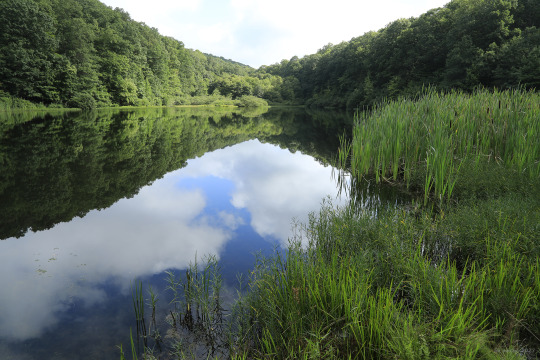
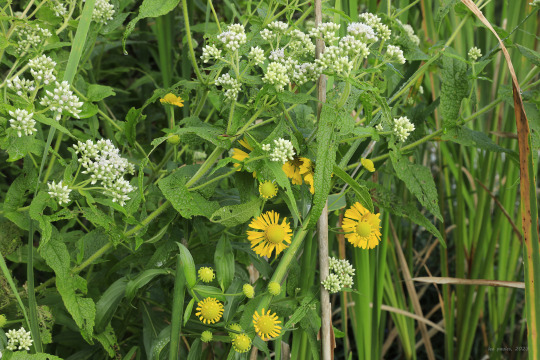
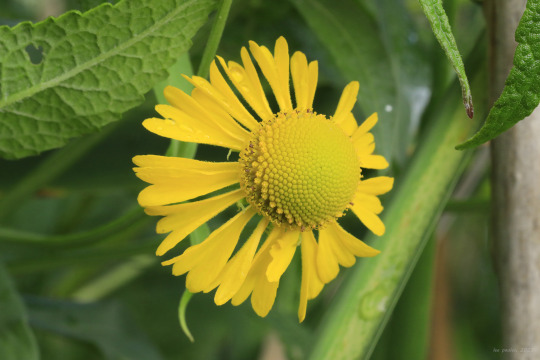



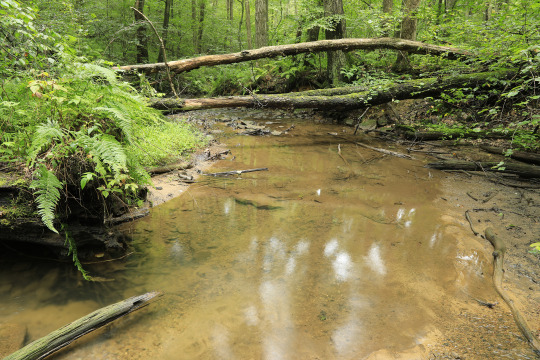


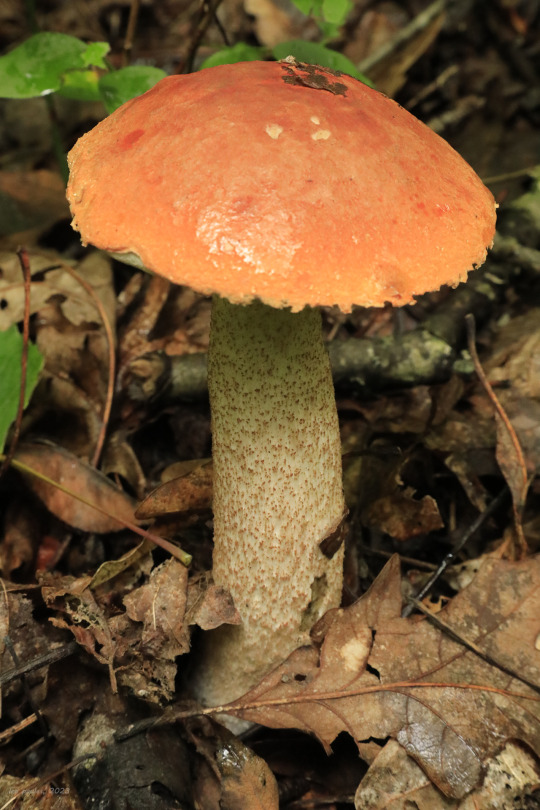

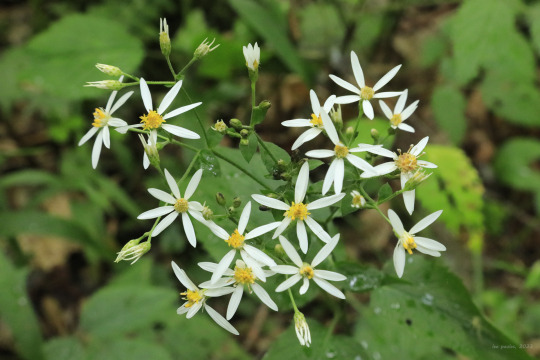

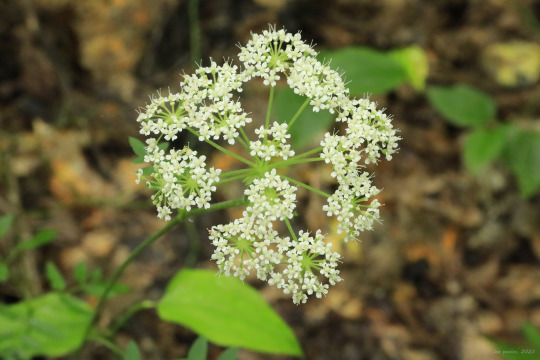
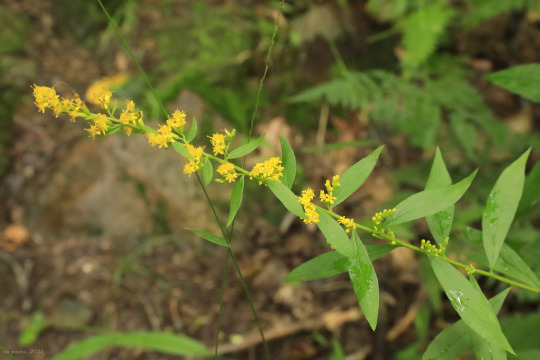

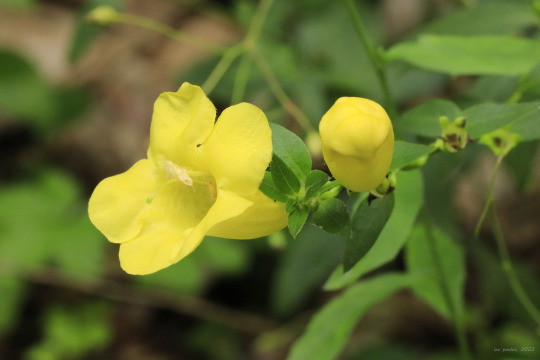

The one thing that excites me more than a pop-up summer thunderstorm is a walk in a damp, dripping, glowing-green forest after the storm has passed. The forest's living essence is made all the more real and immediate by the intoxicating perfume of decaying things, creatures flitting like ghosts through the leaves and underbrush, and clinging raindrops unleashed from the treetops by an evanescent breeze. Photos above are from a hike this morning on Glade Run Trail in Coopers Rock State Forest.
From top: common boneset (Eupatorium perfoliatum), which is closely related to Joe Pye weed, and sneezeweed (Helenium autumnale); the deep purple-red berries of common elderberry (Sambucus canadensis); hollow Joe Pye weed (Eupatorium fistulosum), which can attain a height of 7 to 8 feet; eastern tiger swallowtail (Papilio glaucus), whose tattered wings show the wear and tear of summer errands; a colony of gregarious fungi, perhaps cross-veined troop mushroom (Xeromphalina kauffmanii), which grow in huge numbers on decaying hardwoods; a red-capped bolete, perhaps Leccinum longicurvipes, which is symbiont with oak trees; an eastern newt (Notophthalmus viridescens); white wood aster (Eurybia divaricata); bigleaf aster (Eurybia macrophylla); cowbane (Oxypolis rigidior), also known as common water dropwort; bluestem goldenrod (Solidago caesia), a woodland goldenrod with flowerheads in the leaf axils; and Appalachian oak-leach (Aureolaria laevigata), also known as smooth false foxglove, which is semi-parasitic on oak tree roots.
#appalachia#vandalia#west virginia#wildflowers#flora#summer#coopers rock state forest#glade run trail#common boneset#sneezeweed#common elderberry#hollow joe pye weed#eastern tiger swallowtail#butterfly#lepidoptera#eastern newt#amphibian#fungi#bolete#white wood aster#bigleaf aster#cowbane#common water dropwort#bluestem goldenrod#blue-stemmed goldenrod#wreath goldenrod#appalachian oak-leach#smooth false foxglove
138 notes
·
View notes
Text


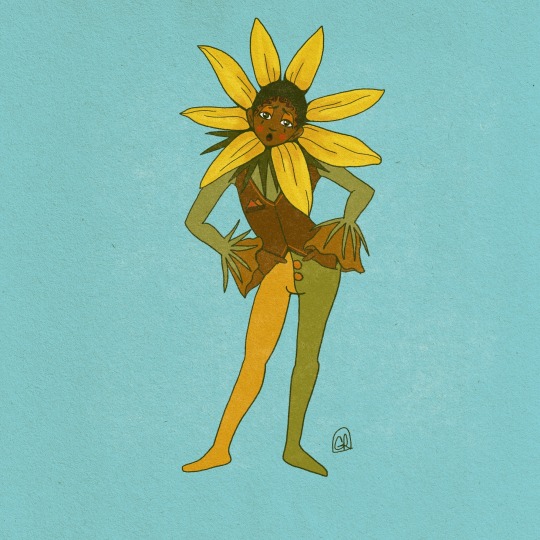
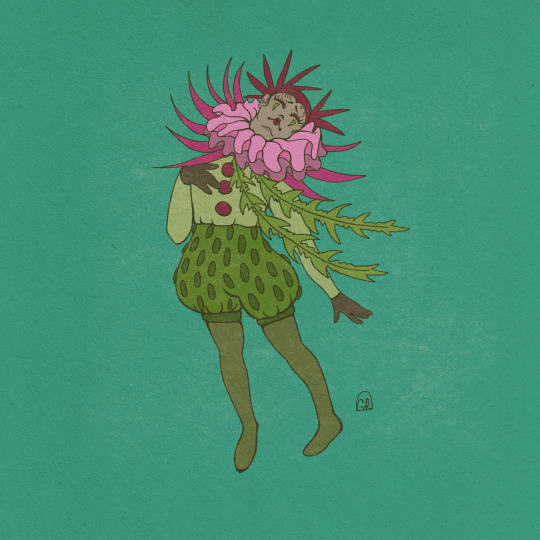
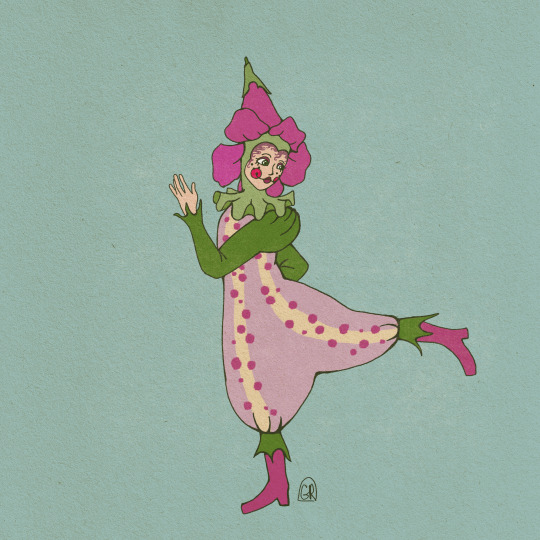
Clowntober week 3 theme was native flowers
I picked wildflower native to NY and decided to make them almost fairy like? Clown sprites I guess. Went for childhood storybooks vibes
Daily themes
Water lily
Purple Coneflower
Woodland sunflower
Swamp thistle
False foxglove
34 notes
·
View notes